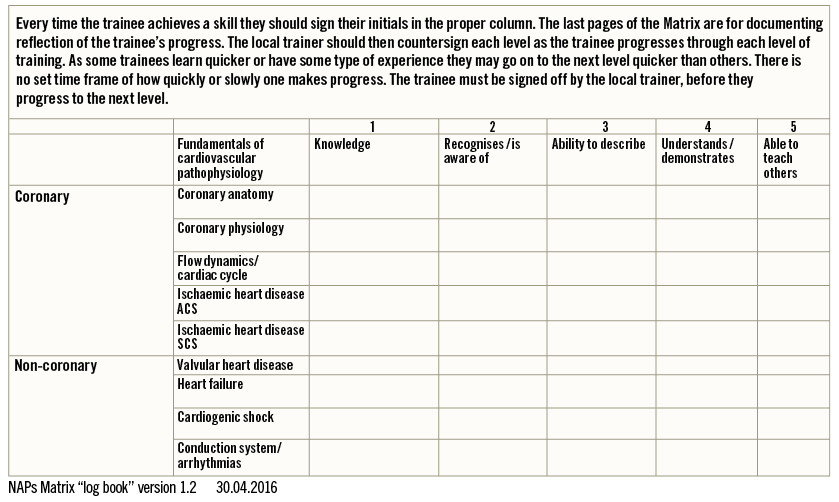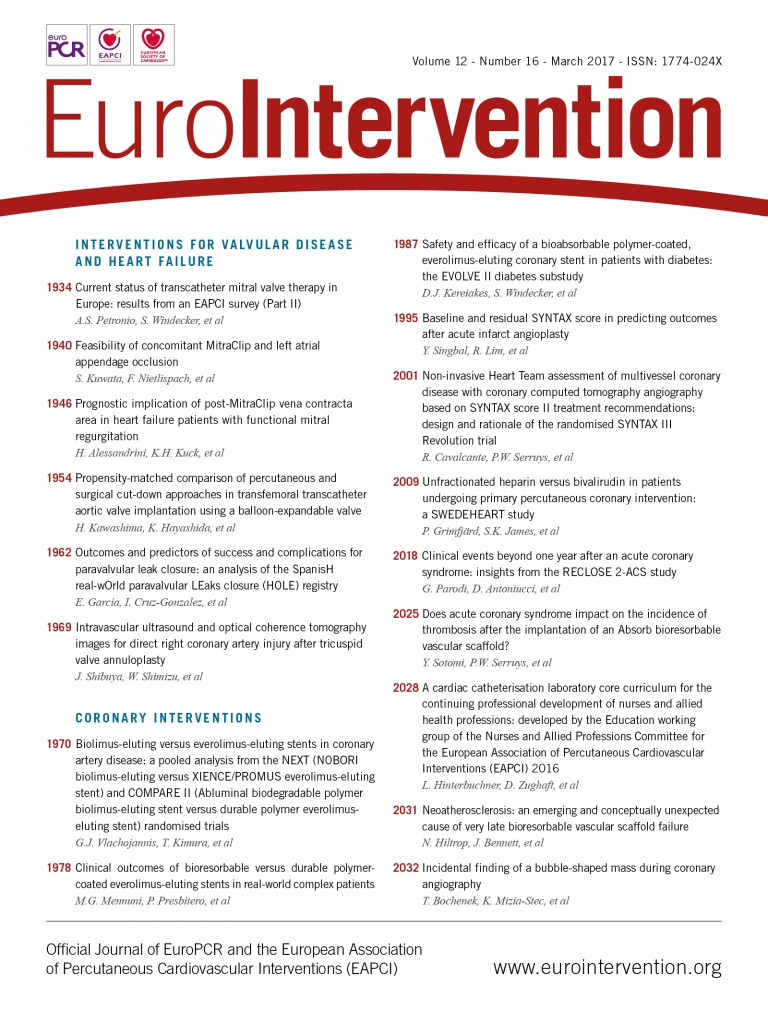
Abstract
Aims: The aim of this report is to provide a standard educational structure for nurses and allied professionals (NAP) specialising in interventional cardiology. The curriculum can also be used as a basis for training on a certificate-based level in interventional cardiology.
Methods and results: The curriculum was developed by a panel of experts from various allied health professions. The syllabus focuses on nine core areas of themes essential for NAP working in interventional cardiology. The highly technical knowledge required for working in interventional cardiology as well as the various roles of the different professional groups have been taken into consideration.
Conclusions: This core curriculum will ensure that essential content is covered during education and a basic level of quality is achieved across specialty cardiovascular educational programmes throughout Europe.
Introduction
Interventional cardiology has witnessed tremendous changes over the years with increasing complexity and diversity1. Procedures carried out in the coronary catheterisation laboratory (cathlab) have developed from mainly diagnostic to treatment of acute myocardial infarction, cardiogenic shock and complex structural heart disorders2. The role and competency requirements of cathlab nurses and allied professionals (NAP) have both changed3. In the treatment of patients with severe cardiac conditions, the contribution of NAP as part of the multidisciplinary team is vital. This reinforces the need for well-educated professionals3,4.
In Europe, the complexity of diverse educational standards for NAP is significant5. Due to the lack of academic and clinical criteria for specialist nursing in cardiology, there is a high variability of competencies and skills throughout Europe, and thus no general guidelines or standardisation6.
In the context of increasing complexity and competency requirements for NAP working in the cathlab and the lack of an educational structure, the development of a European Core Curriculum is essential. The primary objective of this curriculum is to provide a standard educational structure for NAP specialising in interventional cardiology. A secondary objective is to provide a basis for certificate-based education, subsequently clarifying the speciality requirements beyond basic training7.
Methods
DEVELOPMENT OF THE CORE CURRICULUM
The framework of the curriculum is composed of nine core themes. The rationale behind the structure is based on the curriculum framework of cardiovascular nursing, developed by the Cardiovascular Council of Nurses and Allied Professions (CCNAP)8, with the addition of competency requirements for interventional cardiology adapted from the theory of Benner9 (Table 1). The basic foundation of educational strategies, assessment, approaches, and evaluation can thus be found in the CCNAP document8.

In the development of this curriculum, the diverse levels of education and differences in rules and regulations for NAP according to country-specific professional policy were taken into consideration.
LEARNING OBJECTIVES FOR THE SPECIALITY OF INTERVENTIONAL CARDIOLOGY
Apply evidence-based medicine and current guidelines of the European Society of Cardiology (ESC) to meet individual patient needs and characteristics.
Be able to understand and explain to patients and relatives the medical procedure or surgical treatment.
Acquire the theoretical knowledge and practical skills to assist in all interventional procedures in the cathlab.
Assist in pre-procedural, intraprocedural and post-procedural patient care and management. Particular emphasis should be on pharmacological treatment, control of haemostasis, haemodynamics, and prevention of bleeding complications, prevention of allergic reactions and prevention of renal insufficiency.
Identify the optimal strategy and assist in managing and handling of intraprocedural complications.
Results
CARDIAC CATHLAB CORE CURRICULUM CONTENT
The syllabus was developed by a panel of experts from various allied health professions working in the cathlab, representing different areas of expertise (medicine, nursing, cardiopulmonary technician, research and administration). The syllabus content, presented in Online Appendix 1, is arranged into nine themes, basing parts of the content on the CCNAP curriculum1. The nine themes are presented in Table 2, and the complete content with learning objectives, knowledge, skills, attitudes and behaviours can be found in the full version, which can be downloaded free of charge from the EAPCI website: (https://www.escardio.org/static_file/Escardio/Subspecialty/EAPCI/Documents/Core%20curriculum%20EAPCI%20NAP_160318%20version%201.4%20final.pdf)
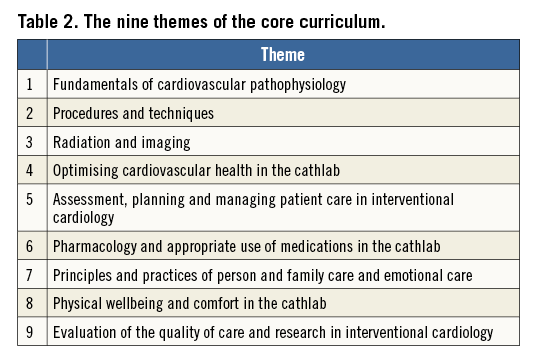
Discussion
The cathlab specialty involves many technical and task-oriented skills. This curriculum together with the documentation matrix (Online Appendix 2), emphasises the use of competencies in order to document, develop and maintain the professional and specialised skills used in a cathlab setting. Accreditation through certification is one of the goals of the European Association of Percutaneous Cardiovascular Interventions (EAPCI) Nurses and Allied Professionals Education group. A further goal includes the development of a modular curriculum using the European Society of Cardiology e-Learning platform (ESCeL), which will constitute the foundation for a certification process.
Conclusions
This curriculum was developed to provide an educational structure for nurses and allied professionals specialising in interventional cardiology, and to provide the basis for training on a certificate-based level. Even though there will be difficulties in implementation due to legislation, regulations and differences in scope of practice, the EAPCI Nurses and Allied Professionals Committee intends to strive for a common European routine for education, networking and research. Furthermore, standardisation of the competencies required to work in the highly specialised area of a cardiac catheterisation laboratory will contribute to the ESC mission to reduce the burden of cardiovascular disease in Europe.
| Impact on daily practice The variability of competencies and skills of Nurses and Allied Professionals in Europe is significant due to a lack of academic and clinical criteria for specialist nursing. The level of competency and standards of practice can be improved by using the curriculum for training of NAP. Furthermore, using the matrix to capture the NAP competencies allows the user to document and follow training of new staff members, new procedures and new equipment. |
Acknowledgements
The authors would like to acknowledge Jean Fajadet and William Wijns for their invaluable support to the creation of a Nurses and Allied Professionals Committee in the EAPCI community, Marielle De La Torre and the EAPCI administration, all nurses and allied professionals in the EAPCI and EuroPCR community and the CCNAP.
Conflict of interest statement
S. Windecker reports research contracts to the institution from Abbott Vascular, Biotronik, Boston Scientific, Medtronic, Edwards Lifesciences and St. Jude Medical. The other authors have no conflicts of interest to declare.
SUPPLEMENTARY DATA
Online Appendix 1. The cardiac catheterisation laboratory core curriculum. Themes and indicative content
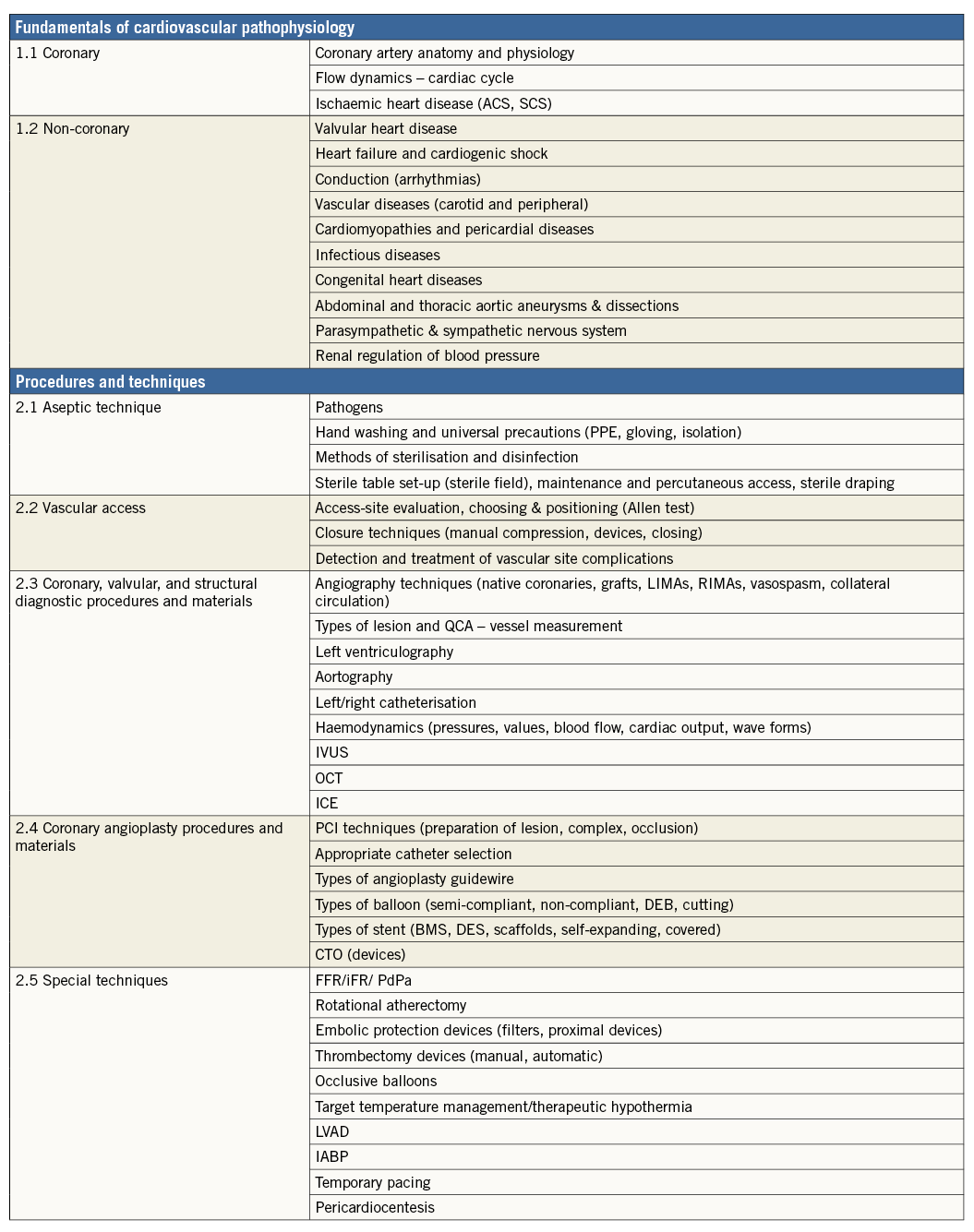
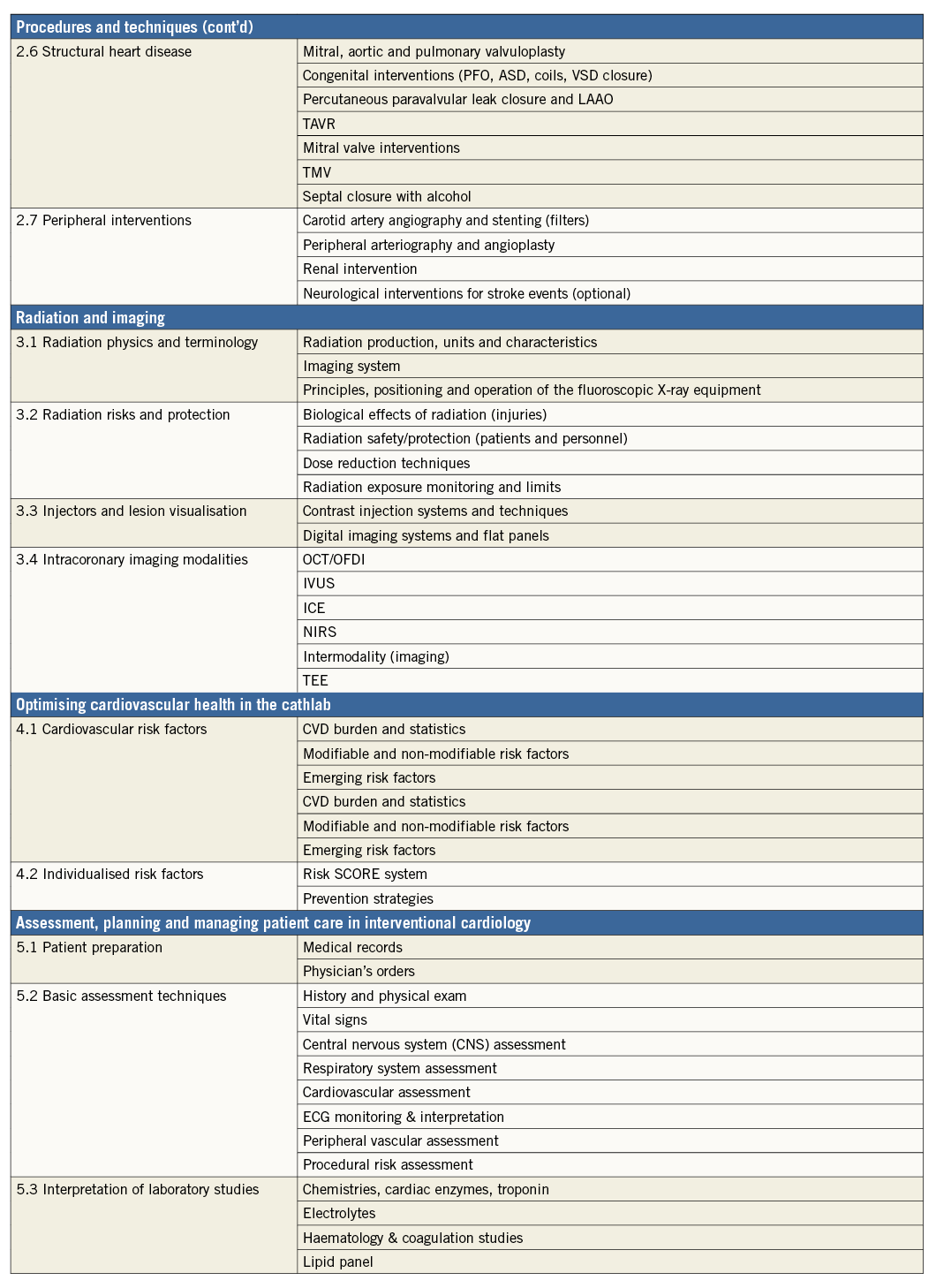
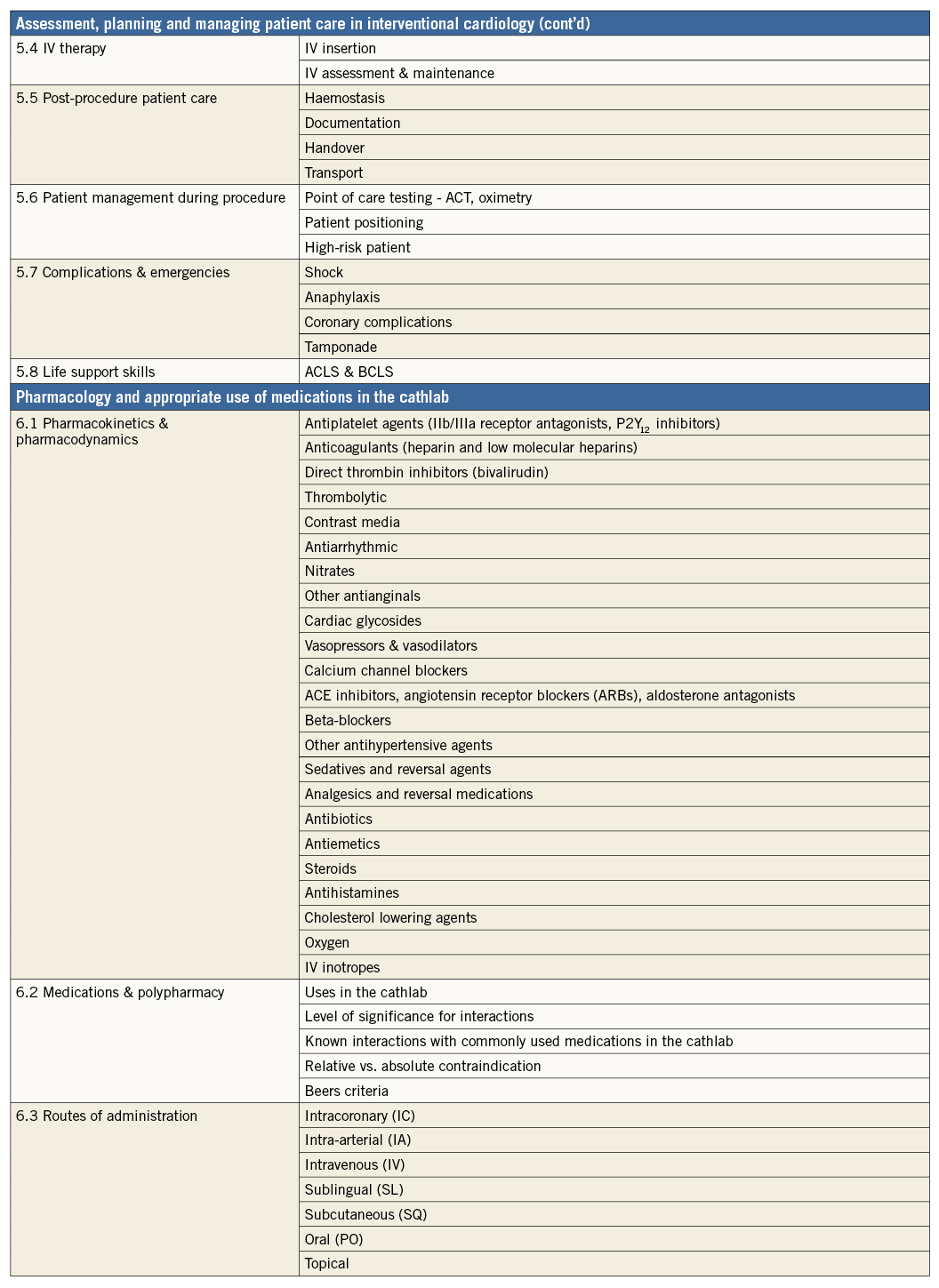
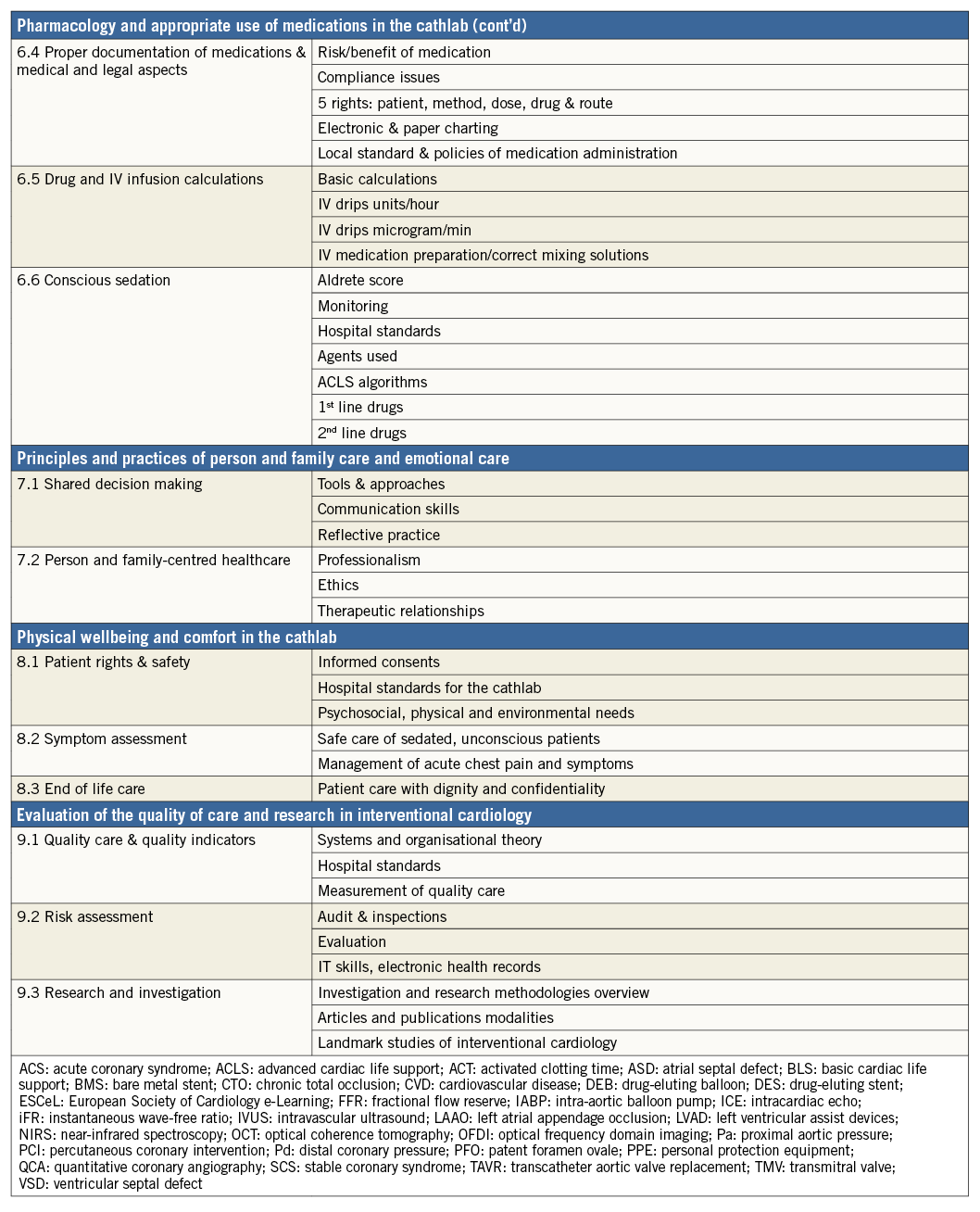
Online Appendix 2. The cardiac catheterisation laboratory core curriculum. Example of documentation matrix
